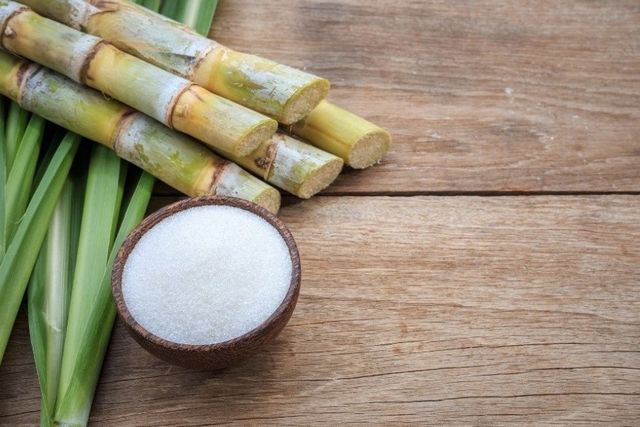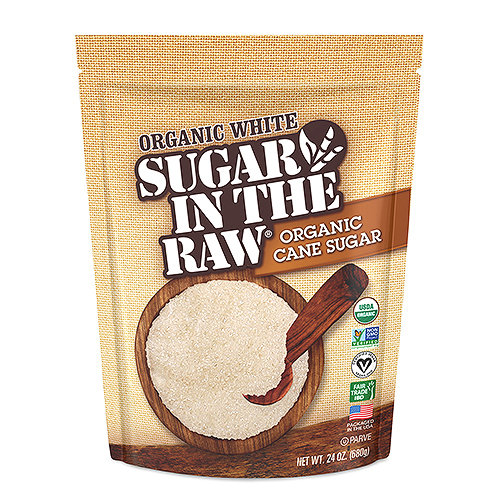The Journey of Cane Sugar Processing: From Harvest to Crystals
The Journey of Cane Sugar Processing: From Harvest to Crystals
Blog Article
Checking Out the Comprehensive Tips Associated With Cane Sugar Handling From Gathering to Improvement
The process of walking stick sugar manufacturing encompasses a collection of intricate steps, starting with the careful harvesting of sugarcane and finishing in the refinement phases that make sure the last item meets industry requirements. Each phase, from the removal of juice to the purification and condensation procedures, plays a crucial role in identifying the high quality and personality of the sugar.
Harvesting Sugarcane
Harvesting sugarcane is an essential step in the cane sugar handling chain, as it directly influences the quality and yield of the last item. Correct timing and techniques are necessary during this stage to make certain optimum sugar web content and decrease losses. Commonly, sugarcane is harvested when it gets to maturation, generally 12 to 18 months after growing, identified by a high sucrose focus.

Post-harvest, the sugarcane needs to be processed quickly to stop sucrose deterioration. Ideally, harvested cane needs to be carried to processing centers within 24-hour to protect sugar high quality. For that reason, efficient logistical preparation is crucial to maintain the stability of the harvested plant throughout the supply chain.
Removal Process

The crushed walking cane is subjected to a series of pushing procedures to optimize juice recovery. Normally, warm water is splashed onto the smashed cane, creating a countercurrent flow that assists liquify the sugar while also aiding in the extraction procedure. The juice gathered from this procedure consists of not just sugar however likewise various natural compounds and contaminations.

To improve removal efficiency, some centers might use diffusion techniques, where the sugarcane is saturated in warm water, enabling the soluble sugars to diffuse right into the fluid. The resulting juice, abundant in sucrose, is after that directed to subsequent processing phases, laying the foundation for purification and refinement. The extraction procedure is hence crucial in establishing the quality and yield of the last sugar item.
Purification Techniques
The filtration methods used in walking cane sugar processing are crucial for transforming the raw juice right into a premium sugar item. These methods largely aim to eliminate contaminations, such as soil, plant products, and inorganic substances, which can detrimentally influence the end product's taste and shade.
Among the most usual purification methods is information. This procedure involves including lime and warm to the raw juice, which facilitates the coagulation of impurities. The resulting precipitate is then eliminated with sedimentation or filtration, generating a clearer juice. Furthermore, using phosphoric acid can improve the clarification procedure by more binding pollutants.
Another substantial method is carbonatation, where co2 is introduced to the made clear juice. This reaction produces calcium carbonate, which records remaining contaminations and promotes their elimination.
Moreover, triggered carbon therapy might be related to adsorb any kind of continuing to be colorants and natural contaminations, guaranteeing a much more refined item. The mix of these methods effectively prepares the sugar juice for subsequent actions in the refining process, establishing the phase for the production of top quality walking stick sugar.
Condensation Methods
After the filtration stage, the next important action in walking cane sugar handling entails condensation methods, which play an essential function in changing the made clear juice into strong sugar. This process commonly utilizes 2 main methods: spontaneous condensation and regulated crystallization.
In spontaneous formation, supersaturated sugar remedies are permitted to cool down naturally, leading to the formation of sugar crystals over time. This technique permits for the uniform growth of sugar crystals and higher pureness.
Throughout condensation, the clarified juice is concentrated through evaporation, raising its sugar material till it gets to supersaturation. When this factor is attained, either approach can promote the condensation procedure. Cane Sugar Processing. The resultant sugar crystals are then separated from the continuing to be syrup with centrifugation
Eventually, the choice of formation approach influences the high quality, size, and pureness of the last sugar product, making this action essential in the overall walking cane sugar handling procedure.
Improvement and Packaging
Just how can the pureness and top quality of walking cane sugar be even more boosted after condensation? The improvement process plays a crucial function in attaining top notch cane sugar.
Next, the sugar goes through a procedure called centrifugation, where it is spun at high speeds to separate the detoxified sugar crystals from the remaining liquid. After centrifugation, the sugar is commonly more refined with a method called carbonization or phosphatation, which makes use of activated carbon or phosphoric acid to get rid of shade and off-flavors.
As soon as refined, the sugar is dried to achieve the desired dampness content, making certain that it continues to be stable during storage and Bonuses transport. The last action entails product packaging the polished sugar in airtight and moisture-proof containers to preserve its high quality and stop contamination. Cane Sugar advice Processing. Correct product packaging not just extends service life but likewise assists in very easy handling and circulation, making certain that customers obtain sugar that fulfills the highest possible criteria of purity and quality
Conclusion
The thorough actions associated with walking cane sugar handling, from the careful harvesting of sugarcane to the complex improvement and product packaging stages, emphasize the relevance of each stage in making certain top quality sugar production. Optimum harvesting strategies, effective extraction techniques, and extensive purification procedures jointly contribute to the final product's pureness and security. The formation and succeeding product packaging methods even more enhance the honesty and life span of the sugar, highlighting the intricacy and accuracy intrinsic in this crucial farming market.
The process of walking cane sugar production encompasses a collection of detailed steps, starting with the mindful harvesting of sugarcane and finishing in the improvement stages that ensure the last product fulfills sector standards. Preferably, collected cane should be carried to refining facilities within 24 hours to maintain sugar quality.In spontaneous formation, supersaturated sugar services are permitted to cool normally, leading to the formation of sugar crystals over time - Cane Sugar Processing. The improvement process plays an important duty in accomplishing top notch cane sugar.The thorough steps entailed in cane sugar handling, from the meticulous harvesting of sugarcane to my link the intricate refinement and product packaging stages, highlight the importance of each stage in guaranteeing high-quality sugar manufacturing
Report this page